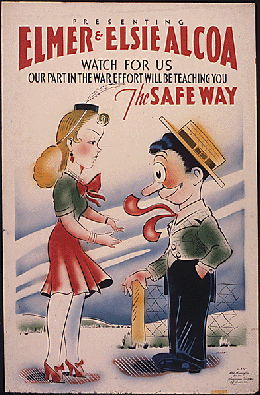On September 23, 1940, the Aluminum Company of American (Alcoa) plant at Vancouver, Clark County, produces the first aluminum to be manufactured in the West. The new plant, which uses hydropower from the dams recently constructed on the Columbia River, helps boost Vancouver's economy following the depression of the 1930s. Within little more than a year, the aluminum it produces is being devoted to the effort to win World War II.
President Franklin Delano Roosevelt's (1882-1945) efforts to bring the country out of the Great Depression in the 1930s included construction of the Bonneville and Grand Coulee Dams on the Columbia River. The president encouraged industrial customers to use the inexpensive hydroelectric power produced by these dams, both to fund the growing hydropower grid and to bring jobs to the Northwest, which was still suffering from the Depression.
The effort paid off for Vancouver, which got some of its first good economic news in over a decade in December, 1939, when Alcoa announced that it would build a huge aluminum plant there. Alcoa's Vancouver Operations plant, located two and a half miles west of the city, was up and running by September, 1940. On September 23, 1940, the plant produced the first aluminum to be manufactured west of the Mississippi River.
When the United States entered World War II the following year, the plant geared up to assist the war effort, reaching an all-time production high in January 1943. Following the war, the company continued to build and modernize facilities, remaining a major industry in the region for many years.

